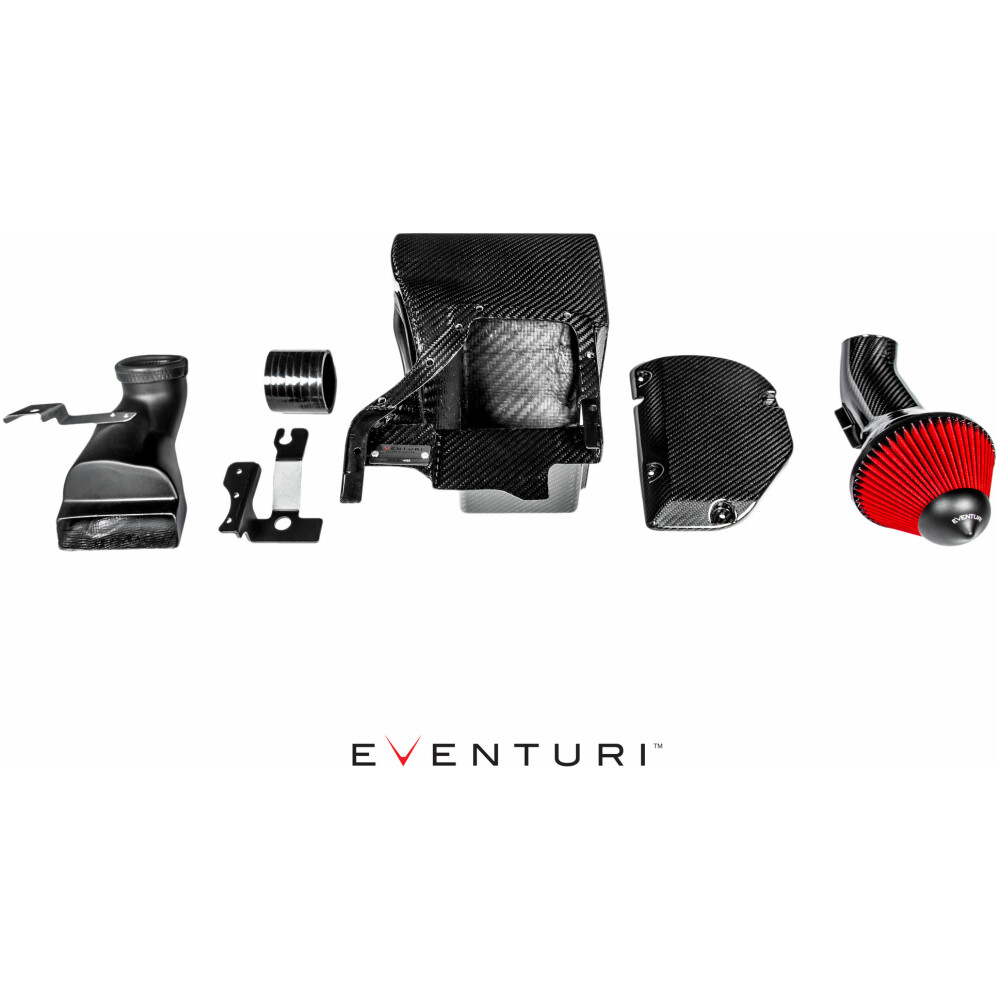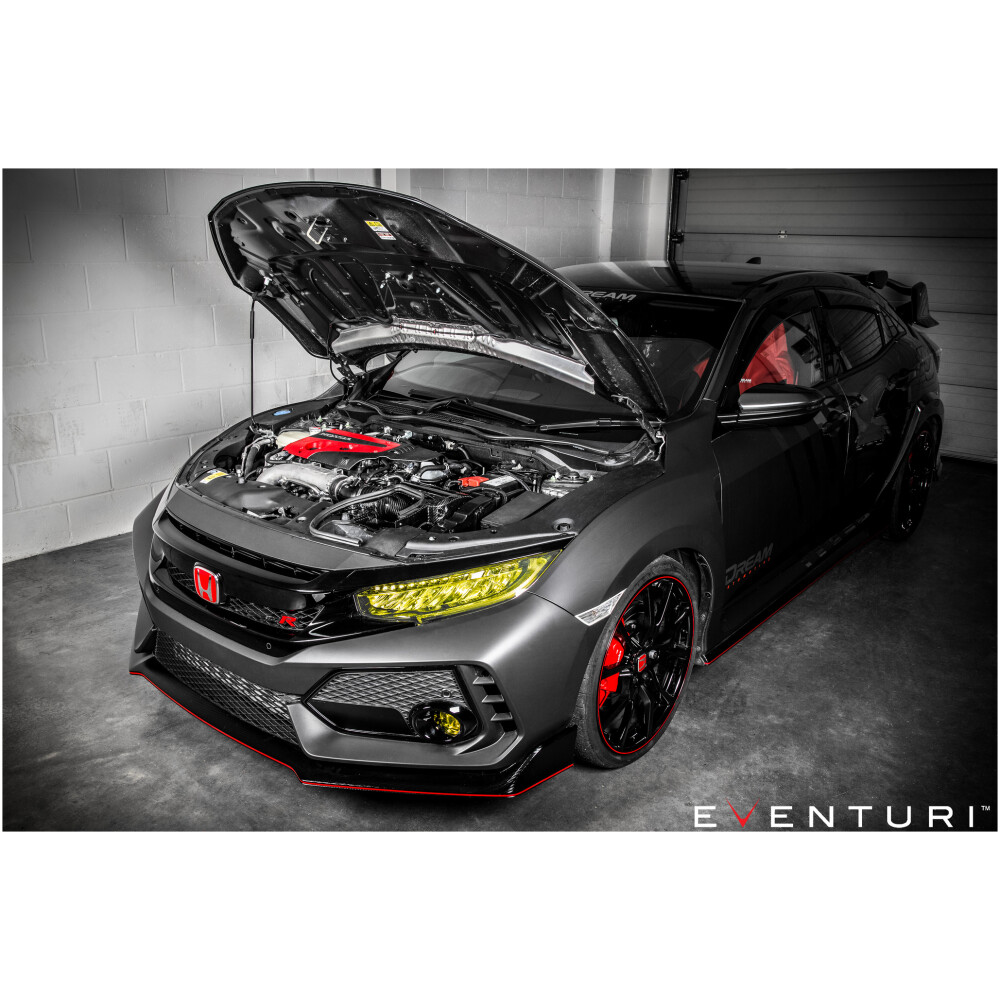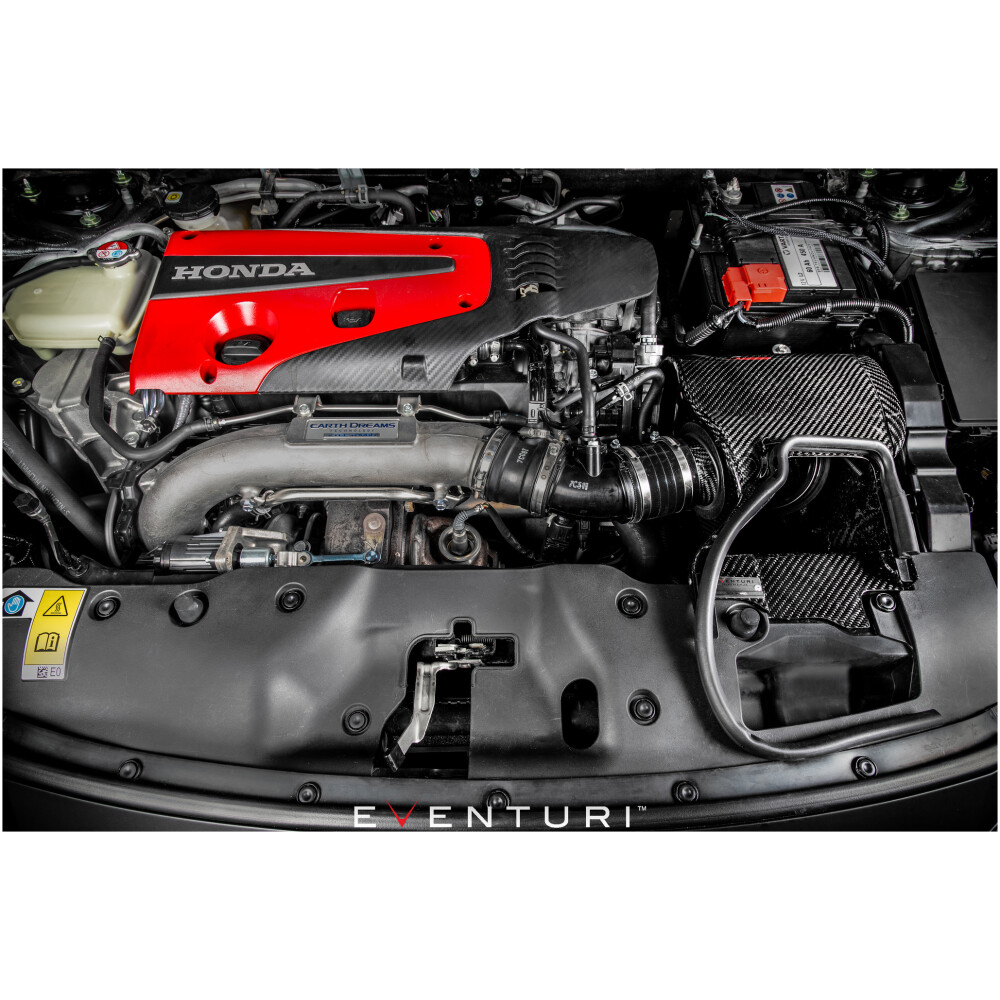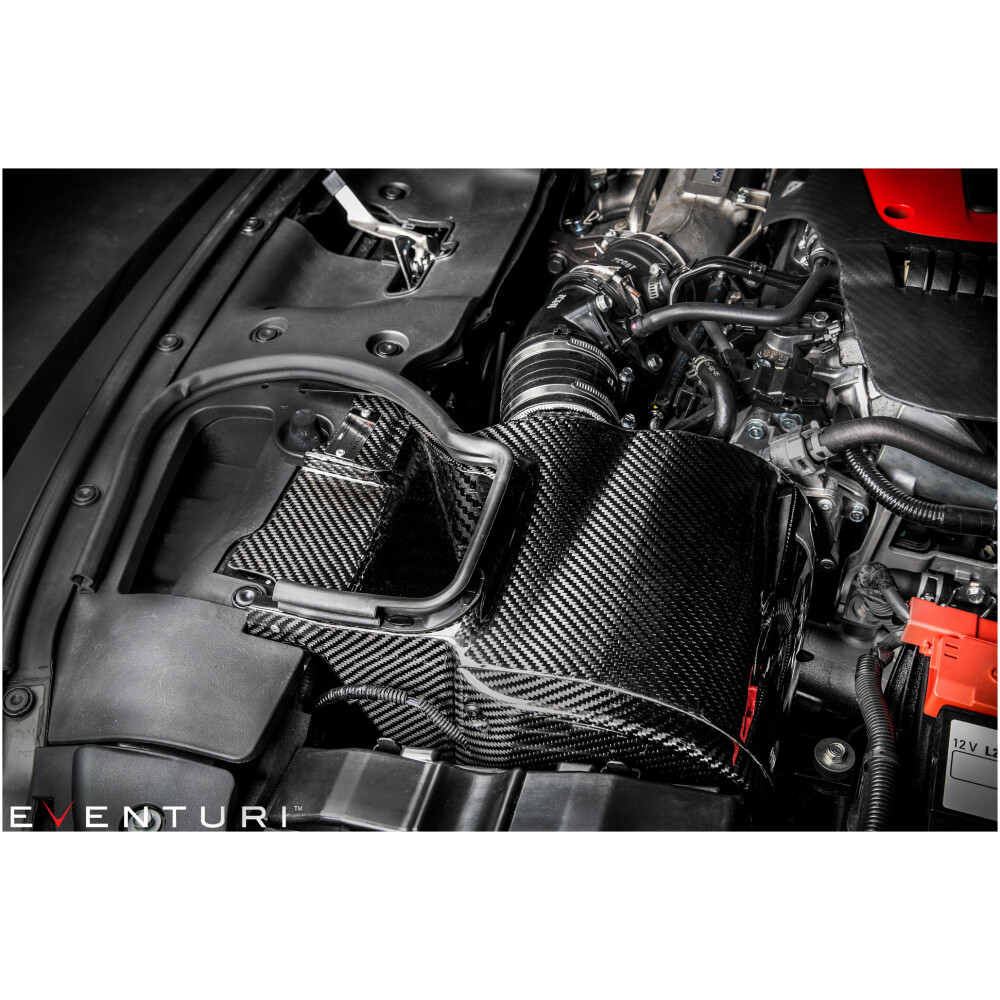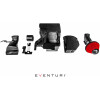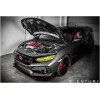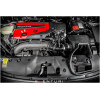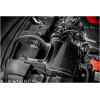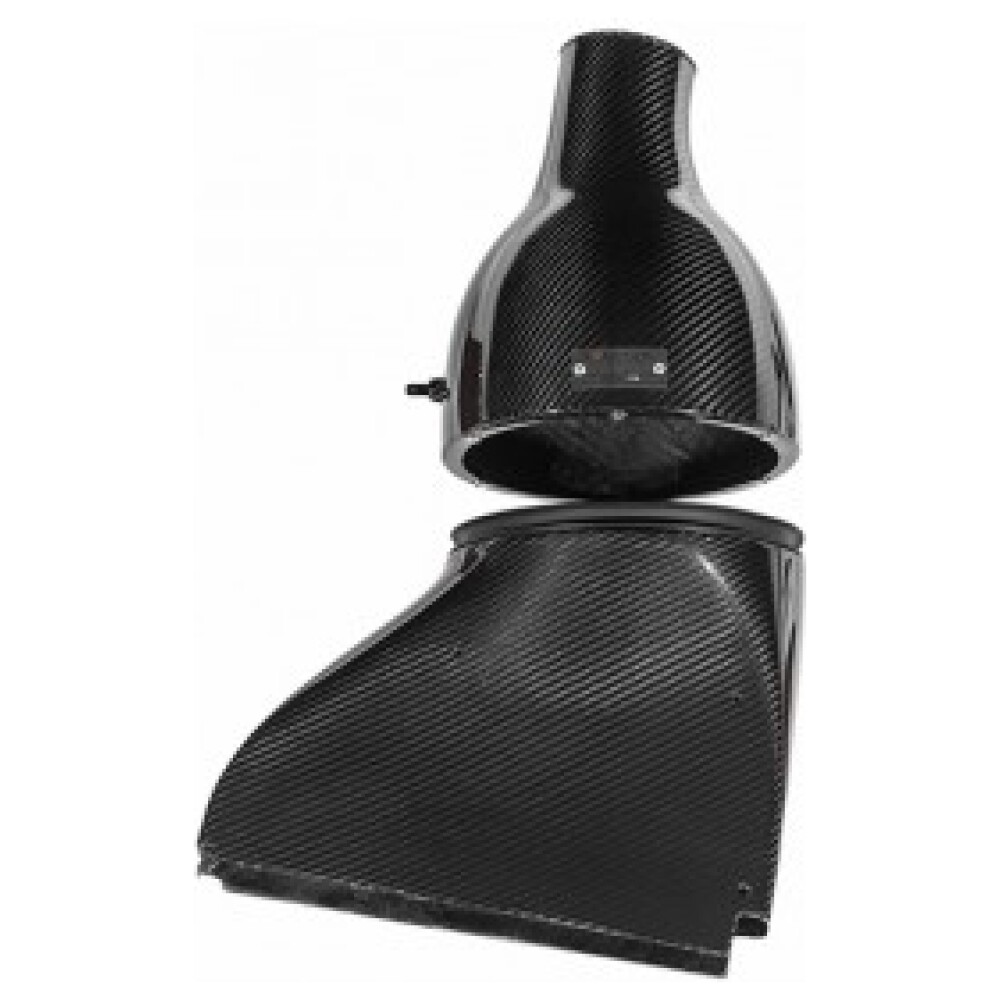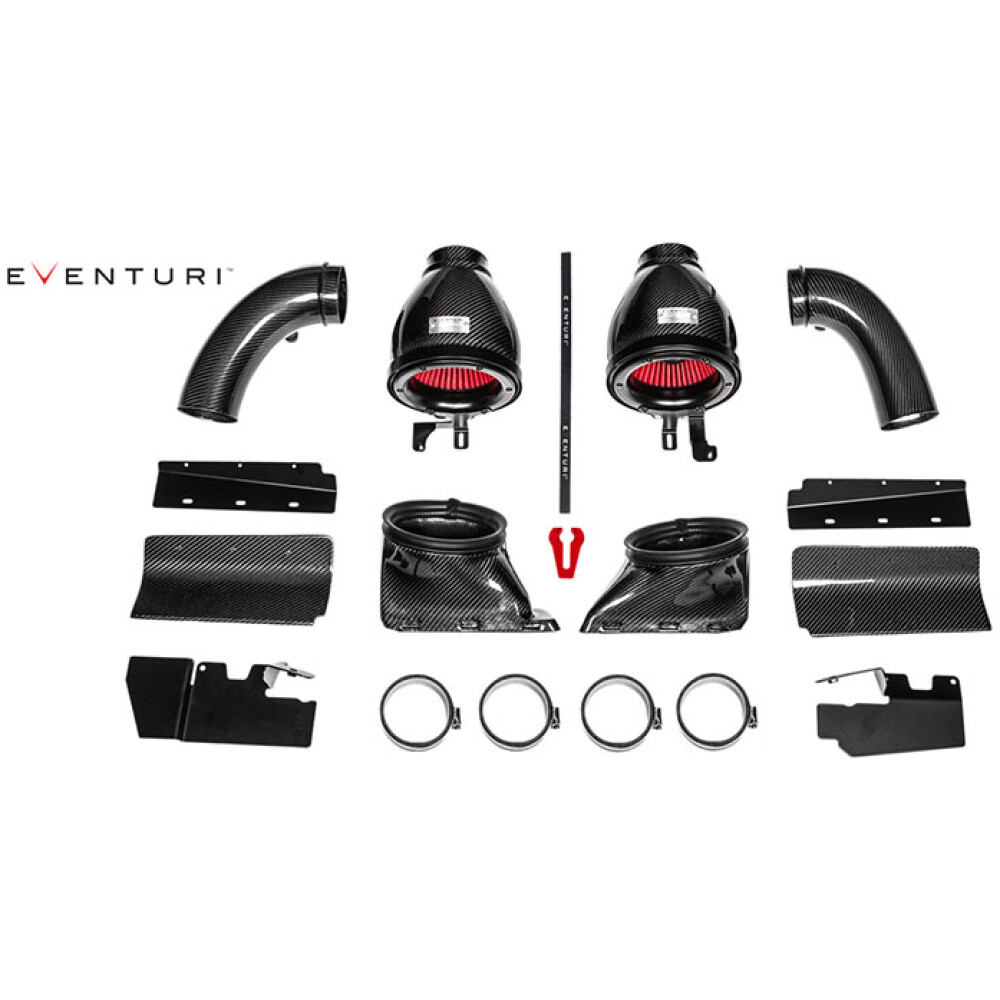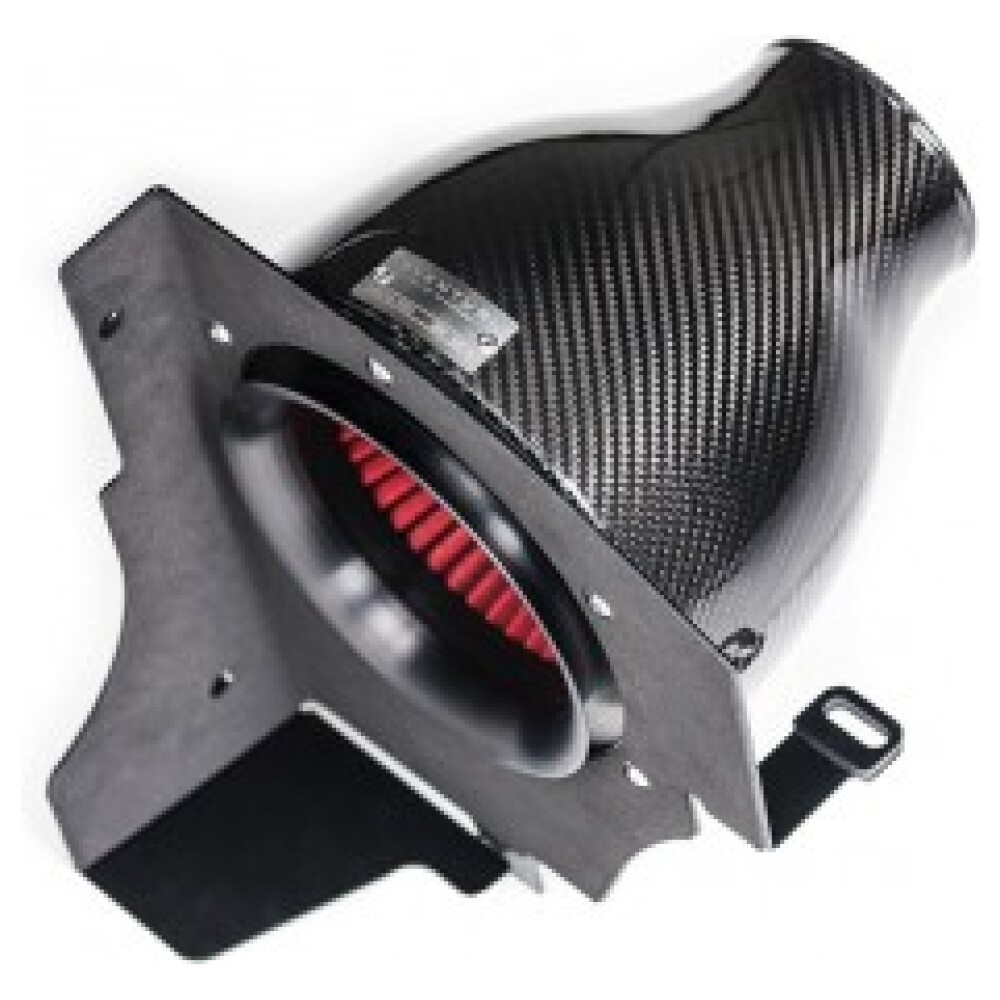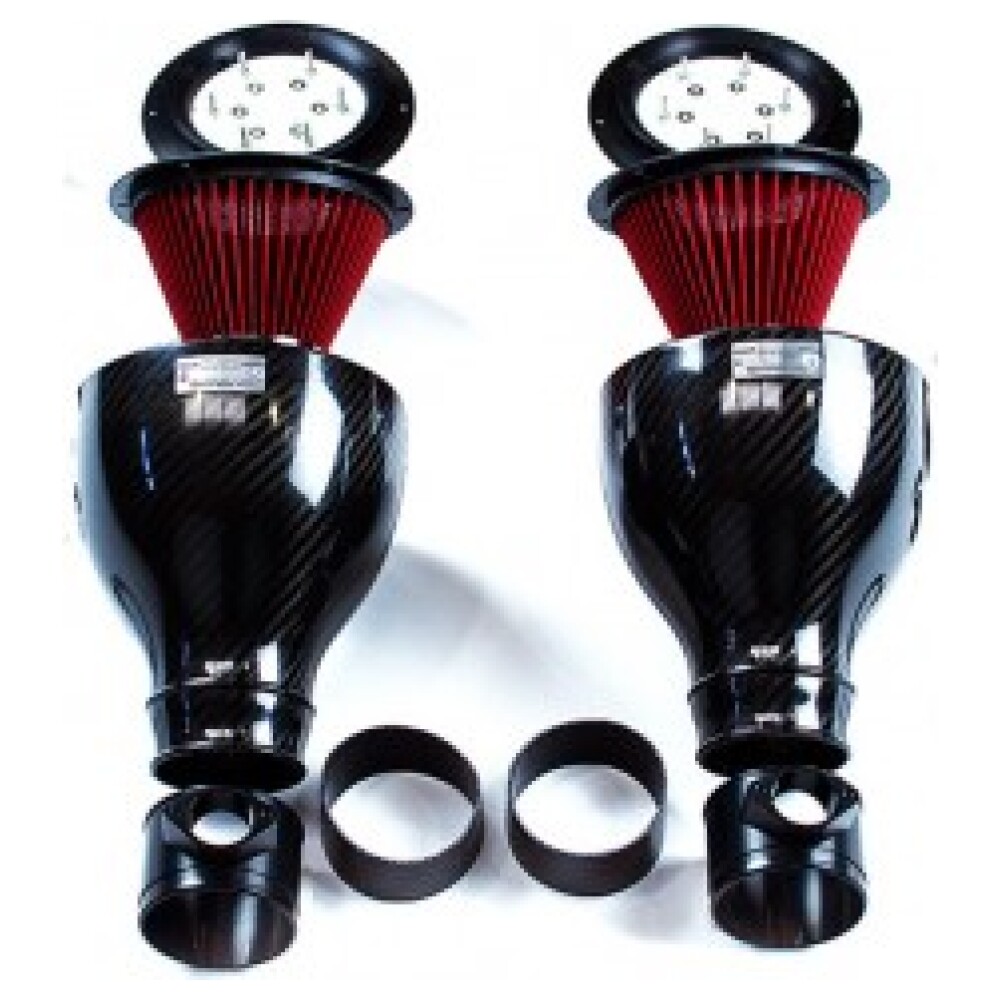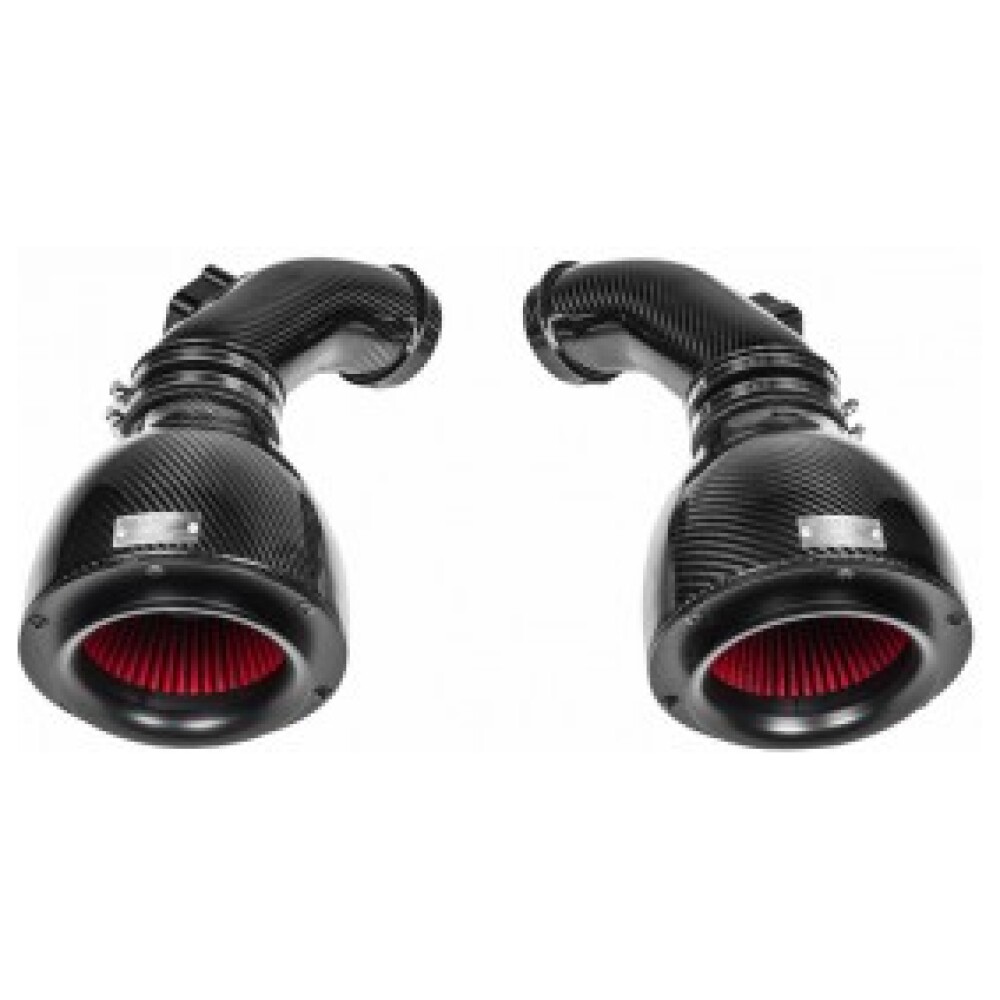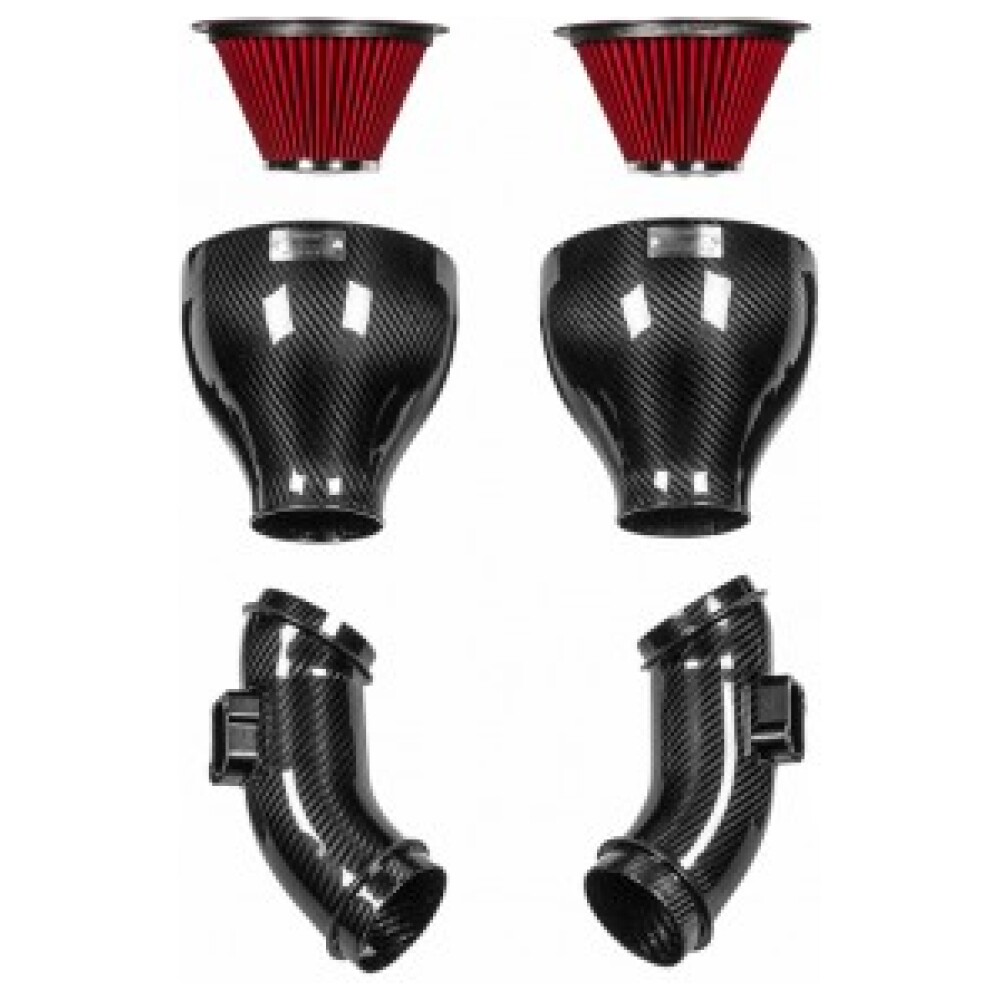Eventuri Honda Civic FK8 Type R aspirazione in carbonio
1.684,00€ IVA incl.
The standard airbox draws in air from a single entry duct behind the front bumper. The size of this inlet is very small at approximately 35cm^2. The demand from the turbo results in this opening becoming a restriction. However, simply opening the filter inside the engine bay is detrimental since the filter position is directly behind the radiator and once the engine warms up – the filter will become quickly saturated with heat. Our intake system solves this issue by keeping the filter enclosed inside an airbox and adding a secondary feed which opens the inlet area by another 28cm^2. This coupled with our Venturi Filter stack for smooth flow results in an immediate gain across the entire RPM range of 14-20hp. The dyno graph below shows the comparison between the stock airbox and the Eventuri intake system on a standard car with standard map and exhaust. Dyno runs were done back to back on the same day and with the hood closed.
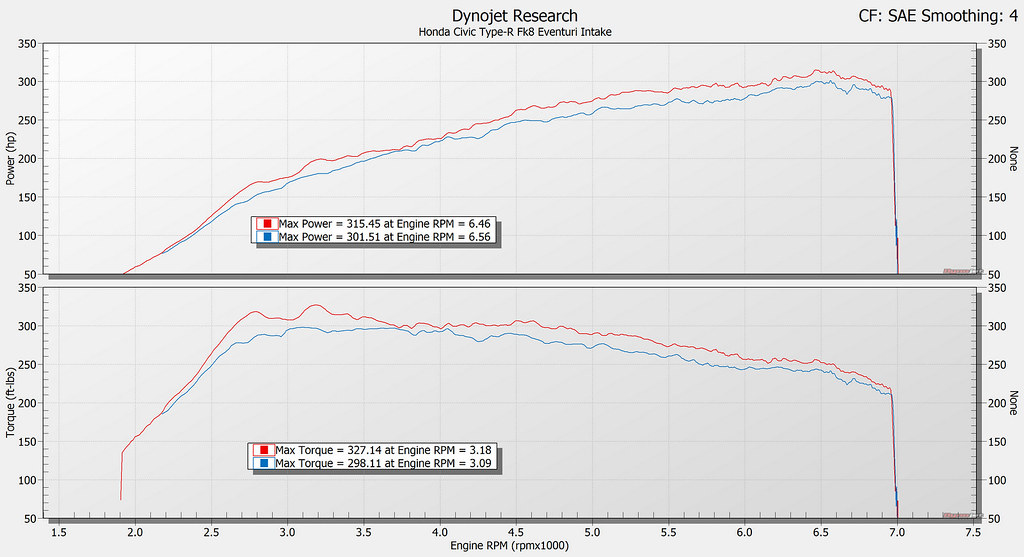
We then carried out road testing using a Vbox unit to record the acceleration from 60-130mph (also 100-200Km/h). Testing was conducted on the same stretch of road – again on the same day to keep variables minimum. Results show that with just the intake added, the acceleration times from 60-130mph and also 100-200Km/h reduced by approximately 1.2 seconds which is a significant change at such speeds.
Acceleration results summary:
- 60-130mph with Stock intake = 15.45 seconds
- 60-130mph with Eventuri intake = 14.27 seconds
- 100-200Km/h with Stock intake = 13.04 seconds
- 100-200Km/h with Eventuri intake = 12.17 seconds
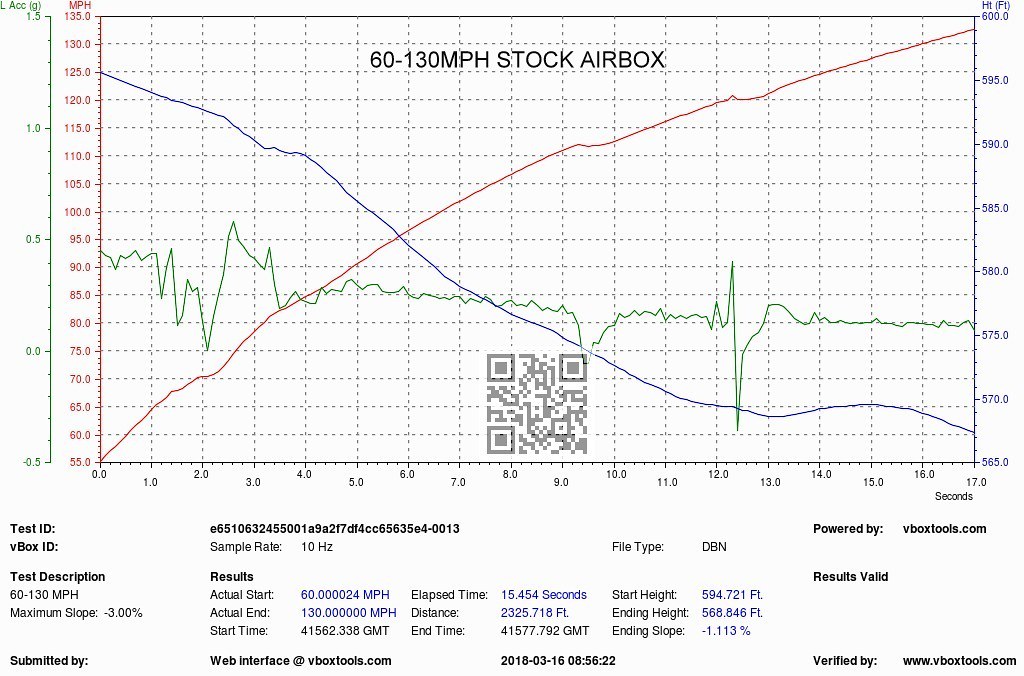
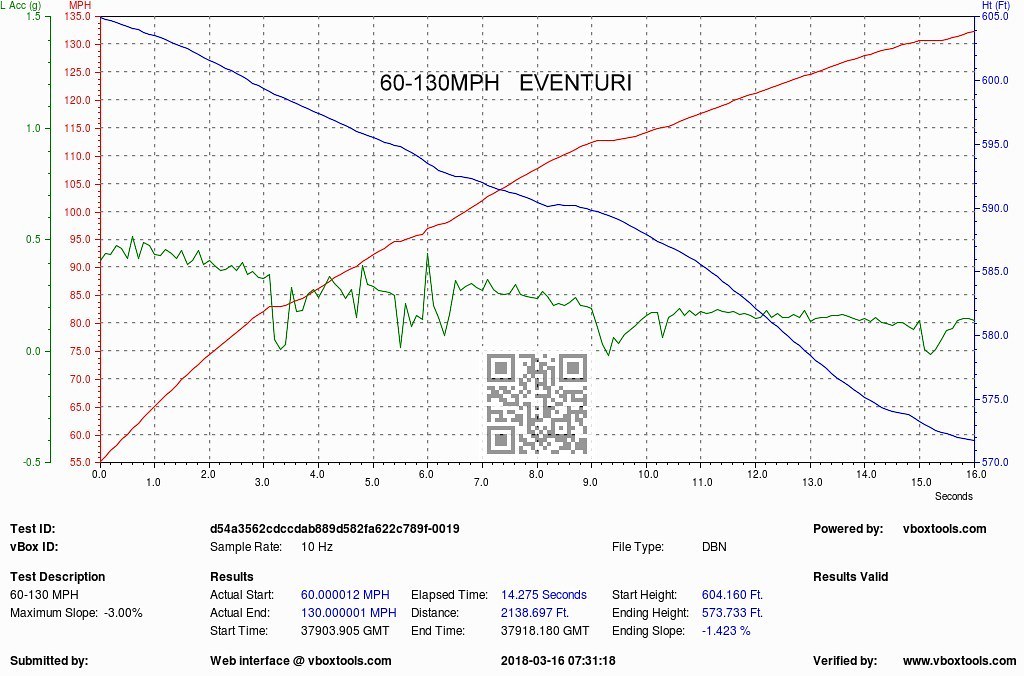
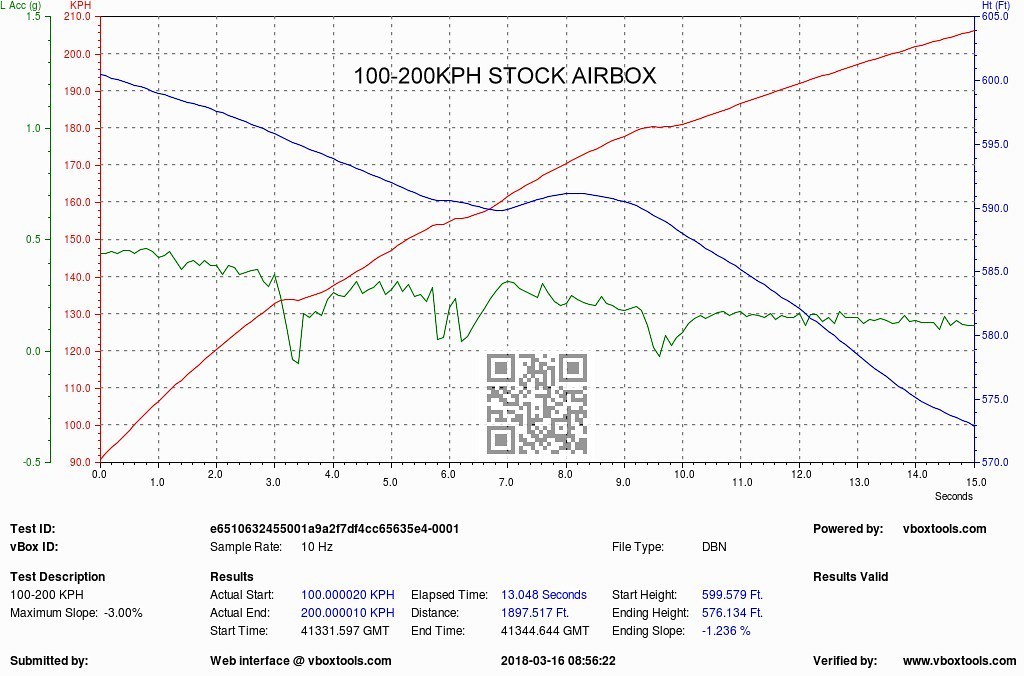
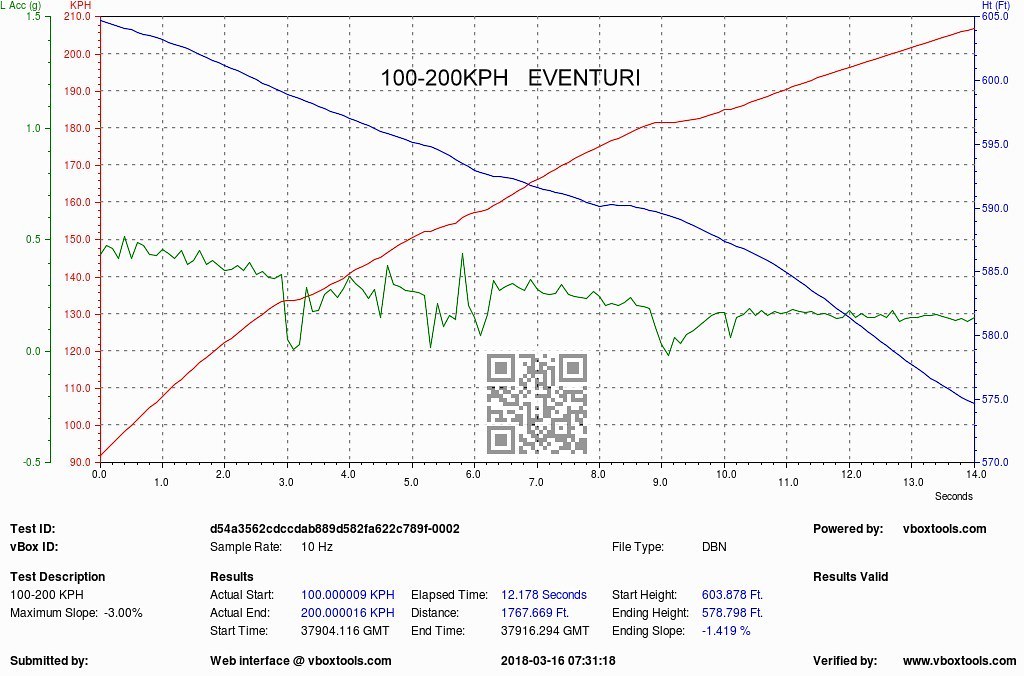
PRODUCT DETAILS
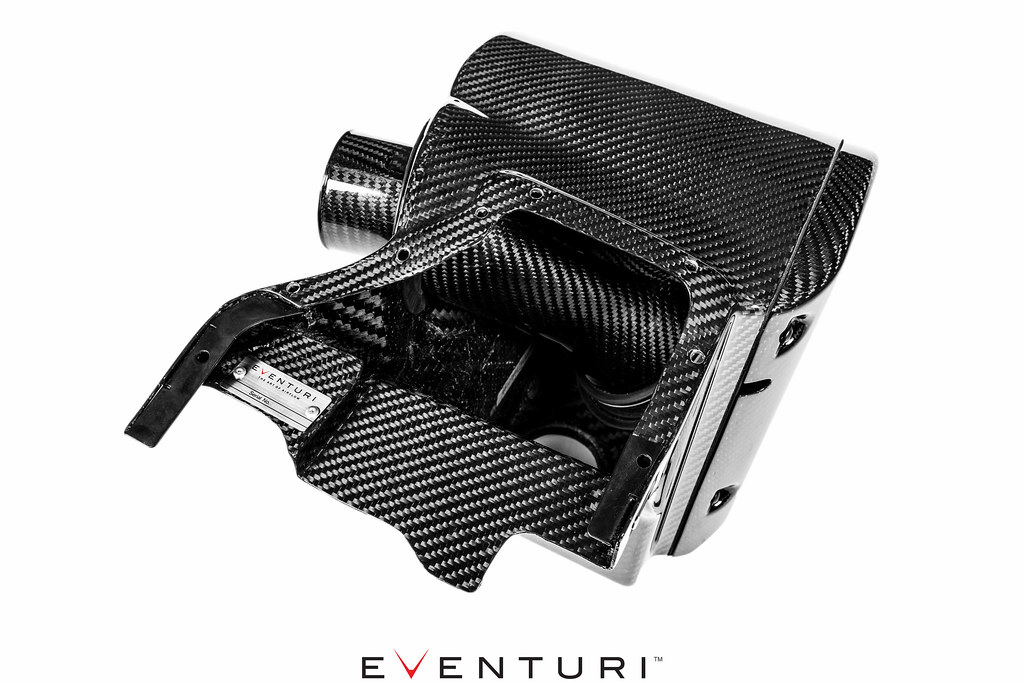
The Eventuri FK8 Type R intake system consists of a number of components engineered to perform a specific purpose and fabricated to the highest of standards. Here are the details for each component and the design ethos behind them:
Each intake system consists of:
- Prepreg Carbon Fibre Airbox Enclosure
- Custom High Flow Air Filter ISO Tested
- Carbon Venturi stack with integrated MAF tube
- Secondary Inlet Scoop
- High quality Silicon coupler with OEM specification hose clamps
- Laser Cut Bracket Work
Carbon Airbox Enclosure
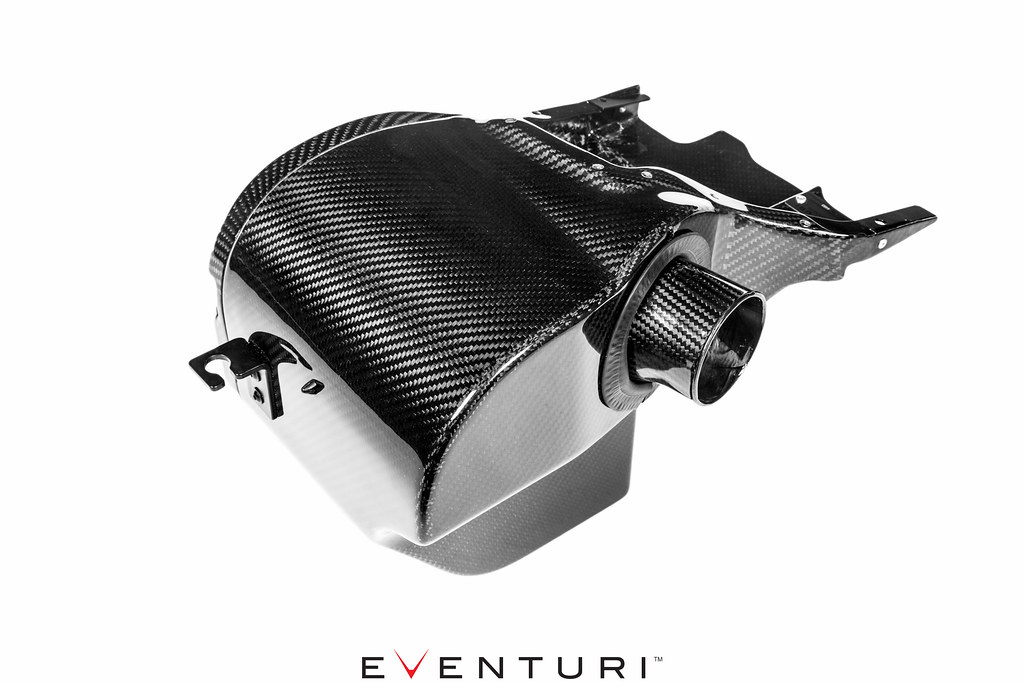
The enclosure has been designed to make the most effective use of the volume given when removing the OEM airbox. It shields the filter from the multiple sources of heat in the engine bay. The most direct source is the radiator and fan which pushes a stream of hot air directly into the intake area. The other significant heat sources are the turbo and downpipe which sit next to the intake area and once the engine is up to operating temperatures, the engine bay becomes quickly heat soaked. All these heat sources require a complete airbox system as shielding – a simple cone and heat shield just cannot do the same job. During development we tested open filters with heat shielding and the inlet temperatures increased significantly causing a loss of power. The airbox prevents these heat sources from adversely affecting the cone filter.
Carbon Venturi Tube
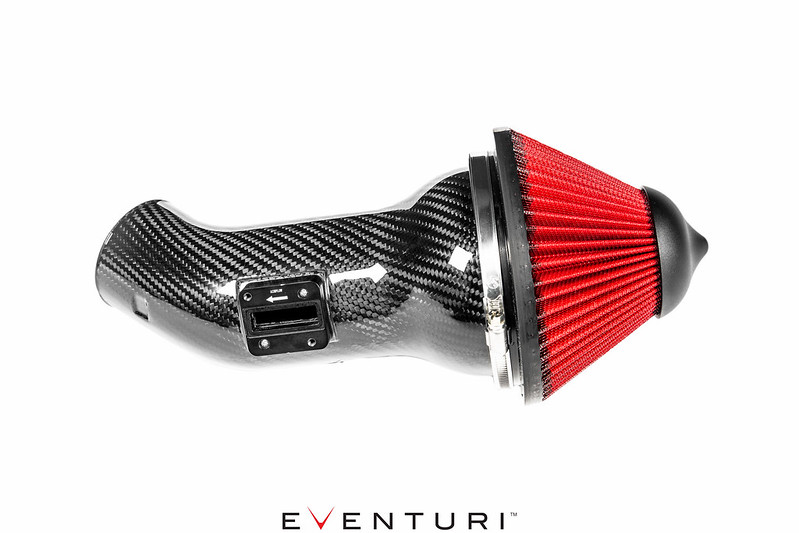
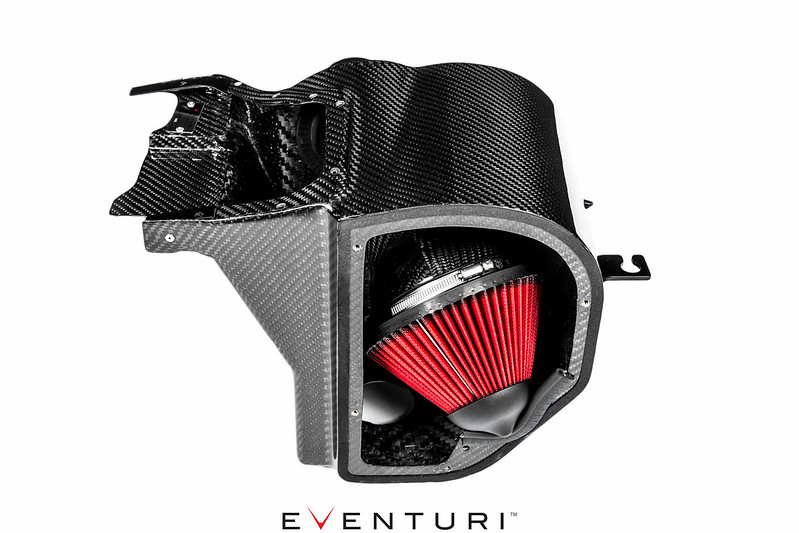
To connect our cone filter to the stock turbo pipe, we designed a tube with an integrated MAF sensor mount and an innovative Venturi stack matched to the inner diameter of the filter neck. This curvature allows the airflow to remain laminar as it goes through the filter and enters the tubing. This replaces the stock flexible rubber tube which has several deep ridges and creates turbulence in the flow path. To maintain a degree of flexibility – the tube is independent of the airbox enclosure and is able to move within the airbox, which relieves any stresses from the engine movements. The Eventuri tube design results in an aerodynamically efficient flow path from the filter to the turbo allowing the turbo to generate boost more effectively and reduce lag. On the road this is noticeable with the car having a sharper and more eager throttle response as boost is generated quicker.

Flow Simulation
As part of our R&D process we carry out flow simulations through our intake systems to ensure that our initial concepts and calculations are reasonable. The simulation also helps us to further optimise the system for smoother airflow where possible.
The flow simulation through a single tube shows an increase in velocity from the filter to the outlet – which is expected as the cross sectional area reduces. It also shows the smooth transition between the filter and tube with the Venturi stack allowing the airflow to narrow down while remaining laminar in nature.
Secondary Inlet Scoop
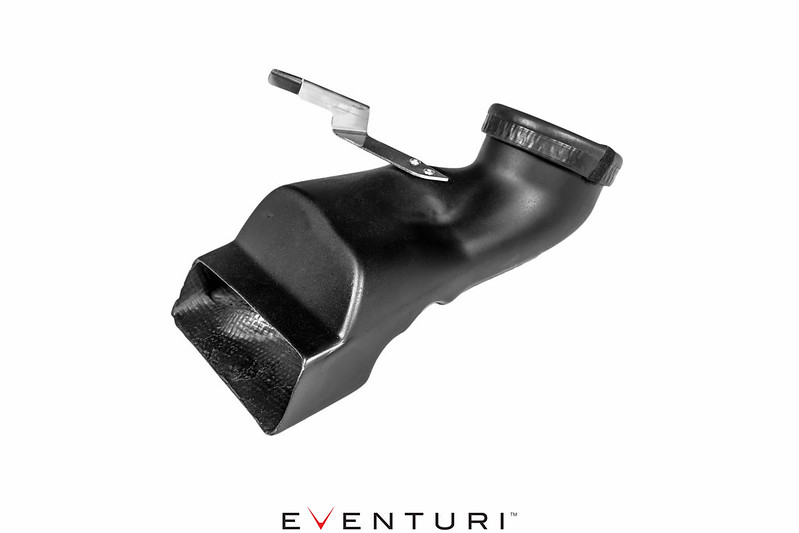
To de-restrict the turbo we had to increase the area through which it can draw air from. The stock opening behind the bumper simply was not large enough at approximately 35cm^2 so we added a second feed in the form of this scoop which seals against the base of the airbox and opens up in the inner wing area which is away from the heat sources of the engine. This adds an extra 28cm^2 cross sectional area from which the turbo can draw air from and testing showed that this was significant enough to improve the overall engine performance. The diagrams below show how the scoop and airbox come together once installed.
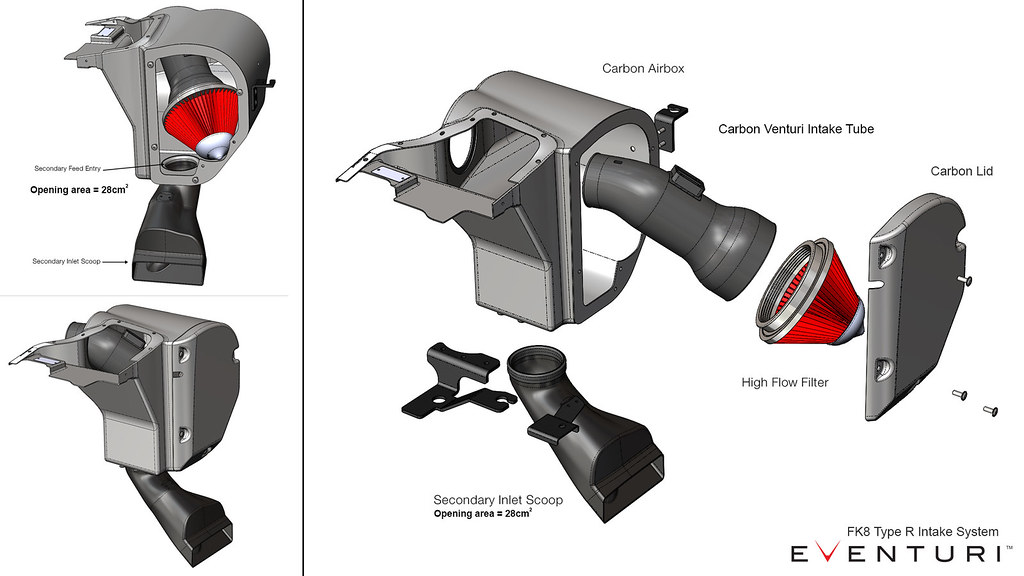
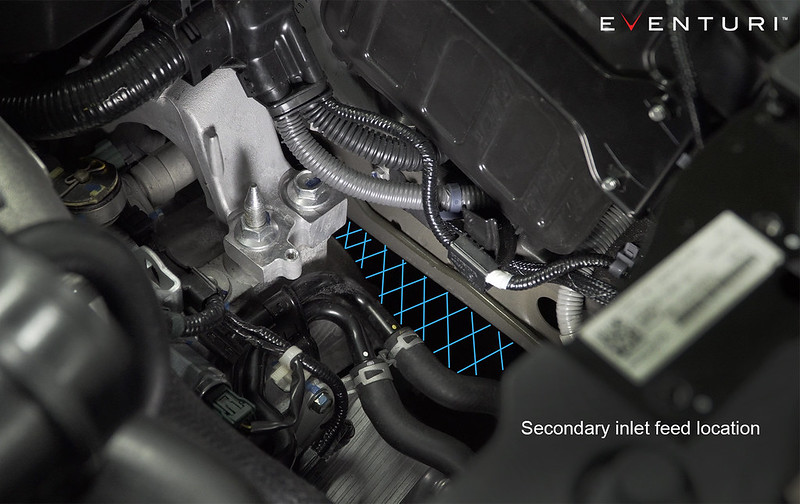
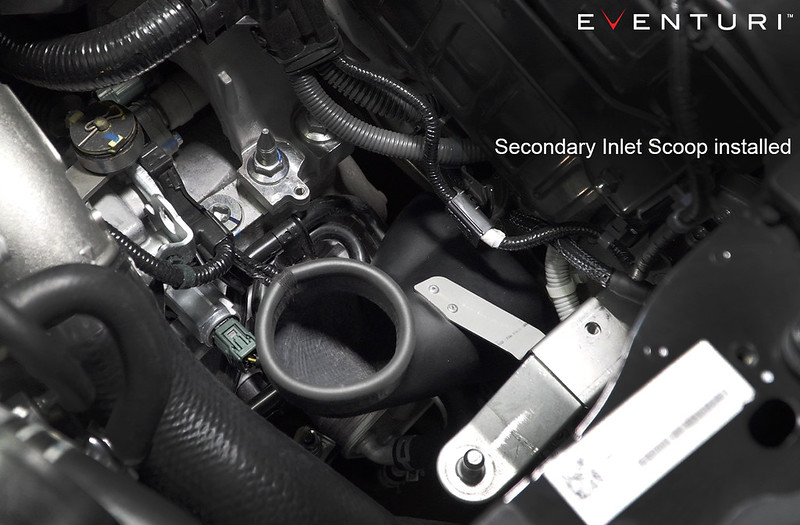
| Eventuri Marca Auto |
|---|
| Marca | Modello | Allestimento | Motore |
|---|---|---|---|
| Honda | Civic | FK8 |

